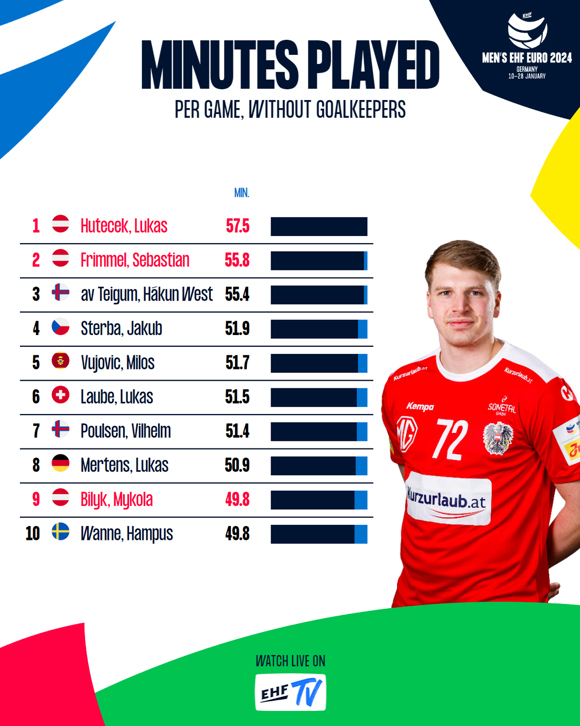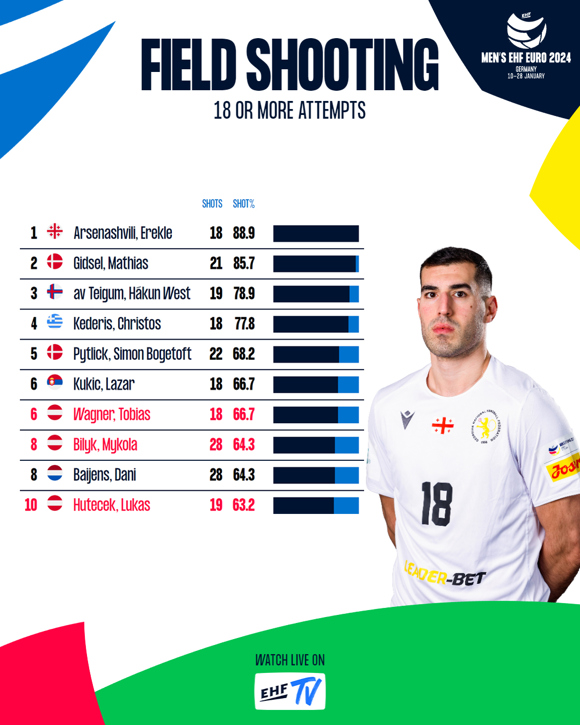Heavy load on four players
The Austrians' wing players also played a big part in this. A total of 25.7 per cent of their shot attempts come from them. Only five teams have a higher share, but just two of them made it to the main round.
Just five wingers have taken a double-digit amount of non-fastbreak shots from the field and both Robert Weber and Sebastian Frimmel are among them. In addition, they have the smallest shooting angles among these five with 29.1° and 32.9°.
Weber and Frimmel are also in the top 10 of the wings that played the most minutes in the competition (49.0 and 55.8 minutes per game). Frimmel even leads all wings, while he is second to his teammate Lukas Hutecek (57.5) in minutes played of all players. Nikola Bilyk (49.8 minutes) is their fourth player in the top 20 of minutes played. Without goalkeeper goalkeepers, he makes it into the top 10 as well.

This means that Austria’s key players have had to play an extremely high number of minutes so far. No other team is represented in the top 20 as often. Of the teams still in the tournament, only Iceland has two players in the top 20, all the others have one or none at all.
Nevertheless, of all players with at least 18 field attempts, Bilyk (64.3 per cent) and Hutecek (63.2 per cent) rank among the 10 players with the best shooting percentage. Bilyk is even the most efficient of all high-frequency shooters with at least eight attempts in the entire EHF EURO 2024.
Austria’s most efficient player with at least 15 field attempts, however, is Tobias Wagner at 66.7 per cent. Together with the Georgian Erekle Arsenashvili, he is also the line player with the most shots per game (six). In contrast to Frimmel, Weber, Hutecek and Bilyk, he gets regular breaks, especially in defence.

So, the big question is whether the four players in particular can continue to deliver under this heavy load. So far, it seems to have been no problem for them, but it will be very interesting to see in the upcoming games if they can keep up these good numbers if they continue to play this much.
But the Austrians' previous games have shown that they are able to adapt to their opponents and perform to the point. So, even if the semi-finals seem out of reach, they are definitely capable of at least one more surprise.
More from data analyst Julian Rux can be found at Handballytics.de. There you can read his latest articles, in which he analyses all kinds of handball topics from new, data-based perspectives. You can also find him on Instagram, Facebook, X/Twitter and WhatsApp Channels.
Photos © Kolektiff Images

